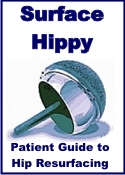|
|
||||||||||||
| |
Knee Replacement Operation and Physical Therapy A knee replacement operation is common today. Many people have undergone this operation to help improve the quality of their lives when it has been blighted by pain and disability from a knee damaged by arthritis or injury. Knee replacement has become much more common over the past fifteen years or so and the results patients are achieving in terms of their ability or level of function after the operation has improved as time has gone on and surgery and post operative regimes have changed. Patients may often be advised to leave having their knee replacement until it is really necessary. By this I mean that the prostheses or the replaced joint may have a lifespan of say fifteen years on average and so if you are an active fifty year old having a knee replaced it may mean that it requires a revision of the operation before you are seventy. Results of revisions tend not to be as successful on the whole as original surgery due to a number of factors but suffice to say that most surgeons would probably prefer not to revise a previously replaced knee if they had the choice. People who live very active lives, for example manual workers, would do well to consider carefully the effects that having a knee replacement will have on their ability to perform their current activities. There will always be exceptions to the rule of course and there will be people around now who get on with their very busy lives after having a knee replaced and are very happy with the results. It is advisable, as has been previously mentioned, for patients to assess carefully whether they will benefit from having a knee replacement now or whether waiting a while may be better. Obviously every patient is different and every case has to be taken on its own merits. The key question to be answered of course is WILL THE QUALITY OF LIFE BE ENHANCED BY THE OPERATION? The operation usually involves a hospital stay of around five days. The surgery can be considered as relatively major in that it involves removing significant bone from the ends of the tibia and femur and replacing them with prosthetics to form a new knee. The new pieces have to be firmly fixed and depending on the circumstances may or may not be cemented in place. After the operation the hard work for the patient and the therapist begins. It is very important that in the first forty eight hours after the knee replacement that the patient learns to get a good quadriceps (thigh muscle) contraction to control the knee and also makes in roads into bending it as soon as possible. Excellent quadricep muscle action and good knee flexibility are keystone characteristics of a successful knee replacement. There is generally a marked level of discomfort associated with the activities involved in achieving these goals at least initially. The pain and resistance will gradually wear off and the activity will seem easier to perform the more it is practised. Doing well in the early stages with muscle and joint movement has an enormously positive effect on the recovery process as whole. If progress is slow in the early stages and there is reluctance to move the new knee and work the surrounding muscles it seems to make the whole recovery process slower and more difficult. Strong and persistent effort in the first few days interspersed of course with the relevant rest seems to pay real dividends. Performing the relevant exercise regime is done initially every couple of waking hours and then decreased in frequency but increased in intensity over the coming days to three or four times a day according the the individual circumstances. Walking is begun soon after the two day post operative mark and is usually with the help of crutches initially. There are numerous medical reasons for this. Prevention of circulatory and muscle wasting complications among them. Patients are trained to walk as normally as possible as this aids in recovery and after six weeks the majority are able to walk well with no crutches, unless of course they are required for other reasons. Recovery in total can take over a year. The maximal level of improvement and function will likely come in peaks and troughs and is best judged over months rather than days and weeks. Patience is definitely necessary. Paying attention to regular movement, strength and functional rehabilitation exercise programs will over a period of time give a knee replacement that moves well, is strong and solid and allows the patient to walk well and affords a good level of function and therefore quality of life. Rob is a successful Physical Therapist and has worked extensively in rehabilitation for over two decades. He has a wealth of knowledge and experience on many facets of sports medicine, physical therapy and physical rehabilitation of all types available at http://www.the-rehabilitation-room.com Article Source: http://EzineArticles.com/?expert=Robert_Ryles |
|
||||||||||
|
Web design by Patricia Walter
Copyright Knees For You 12/18/2006
This site is published by Joint Health Sites
LLC, which is solely responsible for its content. |
||||||||||||


